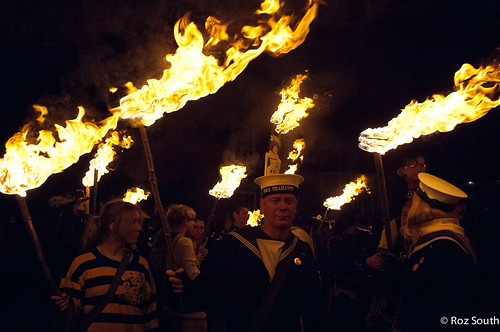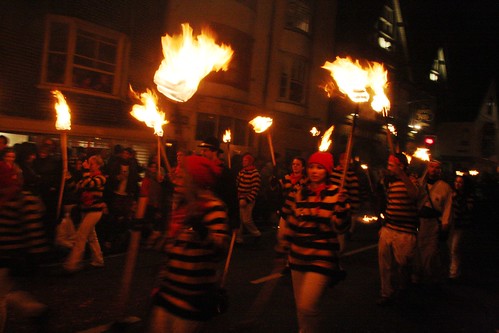
HISTORY OF THE SMUGGLERS
As Bonfire Night approaches thoughts turn to the people of the County of Sussex turn to forthcoming firework events which will tickle your fancy if you live in the region.
As some of you may be aware, the area has a close connection with Bonfire night following the death of a number of protestant locals who were killed in the town square for their faith by then Queen Mary 1st. Although the tradition of the Sussex Bonfire societies goes back to before Guy Fawkes and Robert Catesby’s era, the majority of them were created to celebrate the lives of the Marian Martyrs and around the late 18th and early 19th centuries, a great many Bonfire Societies were formed to celebrate their community and the Church of England faith.
Most of the societies today have continued to work all year around to ensure that the community has something to brighten up those cold November evenings just before Christmas to get rid of the detritus that has been collected throughout the year and of course to entertain young and old in a controlled environment. Annually they raise huge amounts of money for local and national charities – despite the fact that these massive events cost upwards of £5000.00 each to cover the cost of the first aid helpers, insurance, safety equipment and support staff. Of course, some of the Bonfire Societies are adult only but for the majority, it is about children and the youth of today having something interesting, historical and entertaining to do.
Most of the events start with a fancy dress competition before they hold a torch-lit march through the town with band accompaniment. Each of the Bonfire Societies have their own smuggler colours and stripes (hoops actually … but who’s picking!) which also makes them identifiable by their own in a sea of stripes – unless of course you are colour blind in which case you are stuffed! The smuggler references back to the actual smuggling habits of some of the gangs of men who brought in contraband (usually from ships) without paying taxes. Like your local ‘chav’ flogging ‘ciggies’ in the pub today. The biggest ‘gang’ in the area was the infamous ‘Cut-back Gang’ who started out selling the wool from local farmers in exchange for Brandy and silks from France. The smugglers dealt in liquor, guns and gunpowder, tea, coffee and other sundry items but each of the areas had their own gangs. The head of the Mayfield Gang was one Gabriel Tomkins; who was a bit of a lad but not even in the same league as the Hawkhurst Gang who were real bad uns. Unlike the Hawkhurst boys, the Cut-back Gang only used violence against those who tried to double cross them or tried to take them over and most of their cheap booze was sold to the public houses and bordellos in their own area.
The trade in illicit goods was rife in the early 1700s and the smugglers covered all the beaches from Lydd to the most popular landing site at Fairlight, where a great many trades took place.
The smugglers however were understandably under constant pressure and historical evidence (from written court/arrest reports) show that the Ridings Officers were a force to be reckoned with and they are known to have captured some of the members periodically, only to find themselves under attack from raiding parties who freed their ‘brethren’ before they could be brought to justice.
During one such attempt to free their friends, Gabriel was caught and injured in the ensuing melee. Upon capture, Gabriel was questioned extensively about his activities but he only gave up the shop keepers and grocers from the London and Home Counties regions and importantly, brought into question the integrity of some of the Ridings Officers implying that corruption was rife, resulting in the dismissal of 30 officers from their ranks.
Leaving a large number of important roles available left the law short-handed. As he knew most of the bad lads and had a wide knowledge of the area, the local governing officer appointed Gabriel to the role of Ridings Officer. Not too shabby for a man who had shifted 15 – 20,000 pounds of tea and coffee at approximately 5 shillings a pound over a 3 year period (and that's only what he admitted to in court) it was nothing if not lucrative! However, the life of security and living within the law was not for him so being the rogue he was, he soon reverted to type and went back to smuggling until he was eventually caught, convicted and sentenced to hang. He met his end on Friday 23rd March 1750 at the gallows in Bedford’s Gallows Corner.
Whilst no-one is supporting theft and taking goods by use of menaces, the taxes being levied at the time were extortionate and as far as Gabriel was concerned, he just wanted everyone to be able to enjoy a cup of tea … not just the hoi poloi!
Here is a list of all the Sussex Bonfire Society events throughout the Bonfire Season. Please remember that some of these are NOT SUITABLE FOR CHILDREN. They are raucous with much drinking, tar barrels and torches (not the battery operated ones) – check out for the ones with * - these are suitable for families:
Saturday 5th September 2015 Uckfield *
Saturday 12th September 2015 Crowborough *
Saturday 19th September 2015 Mayfield *
Saturday 26th September 2015 Burgess Hill *
Saturday 3rd October 2015 Eastborne & Rotherfield
Saturday 10th October 2015 Ninfield
Saturday 17th October 2015 Hastings, Seaford, Halsham and Nevill*
Saturday 24th October 2015 Fletching, Northam
Saturday 31st October 2015 Ewhurst, Staplecross, Kingston* & Littlehampton*
Thursday 5th November 2015 Lewes, Lindfield, Robin Hood
Saturday 7th November 2015 Battle, South Heighton, Edenbridge, Chailey*, East Hoathley*
Friday 13th November 2015 Isfield, Little Horsted
Saturday 14th November 2015 Rye
Saturday 21st November 2015 Robertsbridge
Saturday 28th November 2015 Hawkhurst
Of the above, the biggest and most famous (or infamous, depending on your viewpoint) is Lewes, acknowledged as the granddaddy of them all. Lewes is definitely not suitable for children and is packed with tens of thousands of spectators.
All of the events are to keep the community spirit alive and to raise much-needed funds for the events and of course for charity. In most cases, the evening ends with a grand finale fireworks display and prayers of thanks for those who have fallen in service of the defence of this country.



